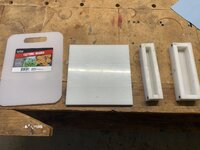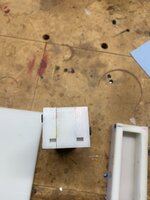WoodfulProjects
Member
Heya all,
I've been thinking lately of starting to make some blanks by combining wood & epoxy.
Although I'm very familiar with wood, epoxy and molding silicone, might be useful to ask more experienced users about advice.
So, here I am.
What are your experiences? What do you make your molds out of? Do you use silicone molds (DIY)? If so, which sort of silicone do you use?
I ordered some TPU and I'll start printing some molds. This said, not sure its works well.. or this is the most cost effective approach.
Previously, before I had my 3d printer, used to make the mold out of wood (scraps glues together) + mold release. Although this was cost effective, it was not the most precise.
Cheers
I've been thinking lately of starting to make some blanks by combining wood & epoxy.
Although I'm very familiar with wood, epoxy and molding silicone, might be useful to ask more experienced users about advice.
So, here I am.
What are your experiences? What do you make your molds out of? Do you use silicone molds (DIY)? If so, which sort of silicone do you use?
I ordered some TPU and I'll start printing some molds. This said, not sure its works well.. or this is the most cost effective approach.
Previously, before I had my 3d printer, used to make the mold out of wood (scraps glues together) + mold release. Although this was cost effective, it was not the most precise.
Cheers


